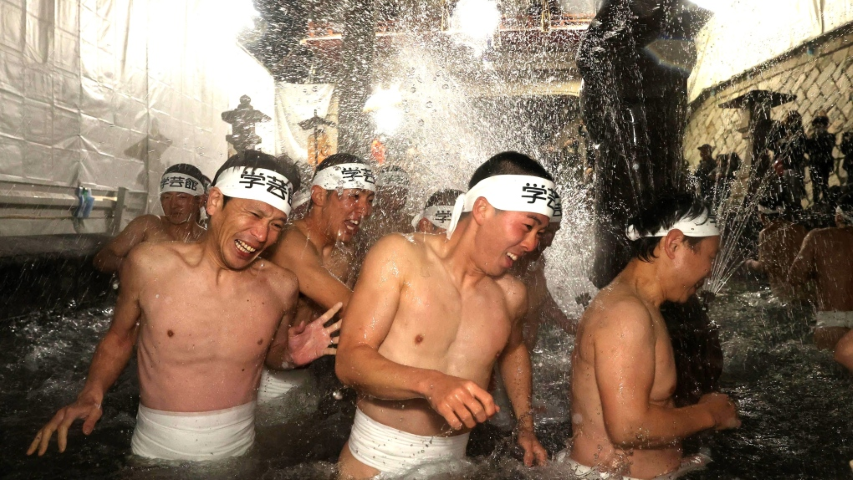
Attendees cleanse themselves with cold water in the Yamauchigawa river during the Somin-sai festival at Kokusekiji Temple in Iwate prefecture, Japan on February 17, 2024. (Photo credit: The Asahi Shimbun/Getty Images)
In the heart of winter's chill, amid a centuries-old tradition, men clad in nothing but loincloths vie for a sacred talisman at Japan's renowned Somin-sai festival, famously dubbed the "naked man festival." Yet, after a millennium of cultural reverence at Kokusekiji Temple, this cherished event met its final bow last Saturday. The reason? A stark reflection of Japan's ageing population crisis.
In a sombre acknowledgement posted online, festival organizers revealed their struggle to recruit younger participants to shoulder the ritual's burdens, which ageing locals now find increasingly taxing to uphold.
"This decision is due to the ageing of individuals involved in the festival and a shortage of successors," lamented Daigo Fujinami, Chief Priest of Kokusekiji Temple.
Japan's demographic decline, tracing back to the economic zenith of the 1980s, has manifested in a strikingly low fertility rate of 1.3, well below the 2.1 needed for population stability. With deaths surpassing births for over a decade, the nation grapples with the implications: a burgeoning elderly populace juxtaposed with a shrinking workforce, straining welfare systems amidst escalating demands.
The Somin-sai festival, one of Japan's trio of prominent "naked man" or Hadaka Matsuri celebrations, held its annual spectacle on the seventh day of the Lunar New Year at Kokusekiji Temple in Iwate prefecture. Drawing crowds of around 3,000, it was a cherished tradition for locals and a captivating spectacle for tourists, symbolizing hopes for prosperity, health, and abundance.
Participants, clad in just the traditional fundoshi loincloth and tabi socks, commenced the ritual by wading into the icy waters of the Yamauchigawa River, cleansing body and spirit. Prayers for well-being and a fruitful harvest ensued, culminating in a frenzied scramble for blessed wooden talismans.
The festival's swansong saw Kikuchi Toshiaki, a 49-year-old local, emerge triumphant in the talisman dash. Reflecting on the event's closure, he expressed a mix of melancholy and gratitude, embodying the sentiment shared by many.
As Kokusekiji bids its farewell, two sister festivals, at Saidaiji Kannonin Temple in Okayama and Kuronuma Shrine in Fukushima, stand resolute, offering a glimmer of continuity amid Japan's evolving cultural landscape.















